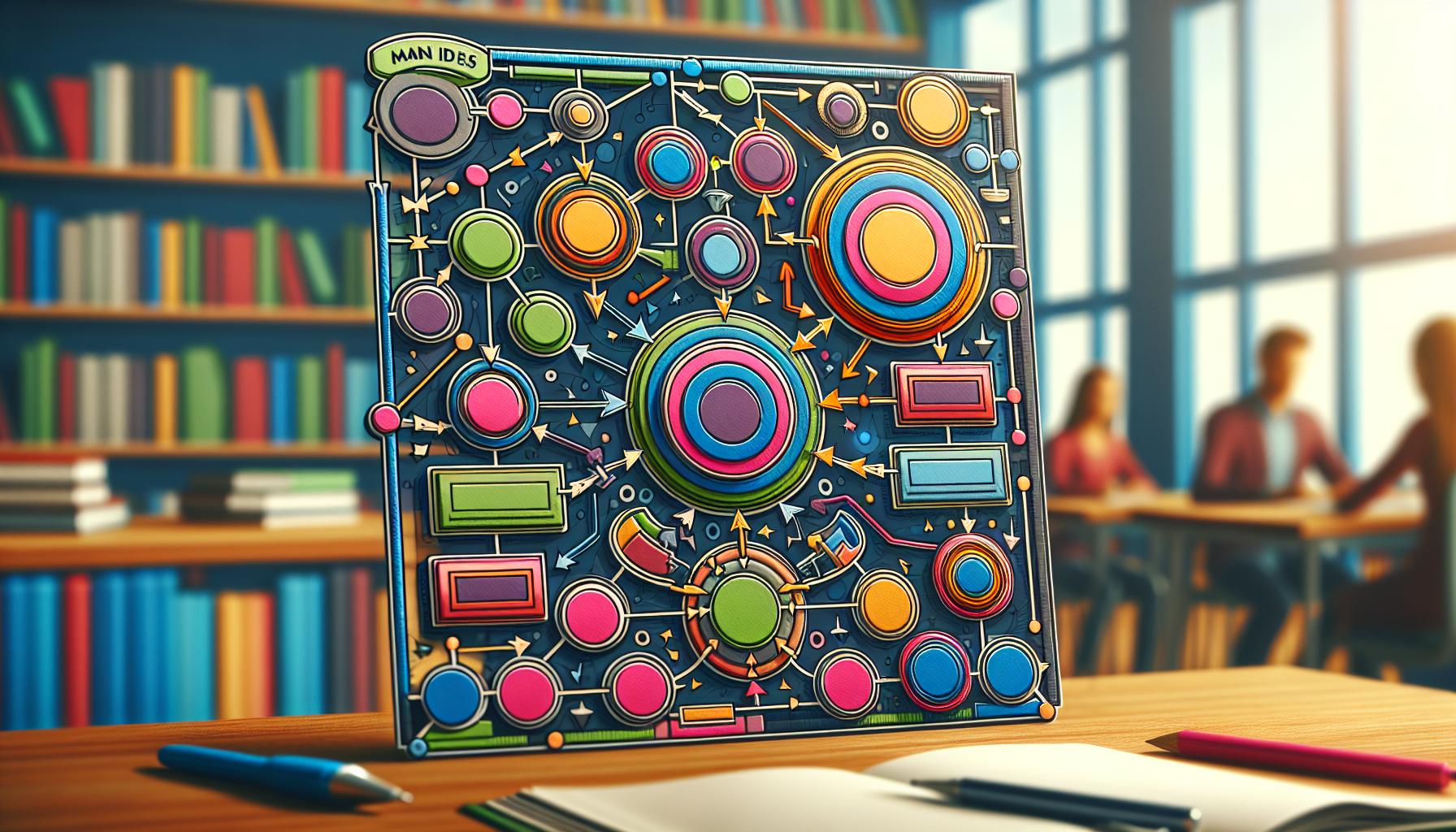The Best Fluffy Pancakes recipe you will fall in love with. Full of tips and tricks to help you make the best pancakes.
Transforming scattered thoughts into compelling nonfiction content can feel like herding cats – chaotic and slightly overwhelming. That’s where nonfiction writing graphic organizers step in as the ultimate idea wranglers, helping writers corral their thoughts into structured, meaningful content.
These visual tools have revolutionized the way authors approach nonfiction writing, making the process more manageable and enjoyable. Whether crafting a research paper, organizing a memoir, or structuring a how-to guide, graphic organizers serve as roadmaps that guide writers from their first rough ideas to polished final drafts. They’re like having a personal writing assistant who excels at turning mental chaos into clarity, minus the coffee runs and small talk.
Understanding Nonfiction Writing Graphic Organizers
Nonfiction writing graphic organizers translate complex ideas into structured visual frameworks. These tools create clear pathways for organizing research, facts, and arguments in nonfiction writing projects.
Types of Graphic Organizers for Nonfiction
- Mind Maps: Central concepts branch into related subtopics creating hierarchical relationships between ideas
- Timeline Charts: Chronological events align in sequence showing cause-effect relationships across historical periods
- T-Charts: Two-column formats compare contrasting elements side by side for analytical writing
- KWL Charts: Three sections track what writers Know, Want to know, and Learned during research
- Venn Diagrams: Overlapping circles illustrate similarities differences between multiple subjects
- Flowcharts: Sequential boxes connect steps processes or procedures in explanatory writing
- Web Diagrams: Supporting details radiate from main topics creating organized clusters of related information
- Enhanced Information Processing: Visual frameworks activate both verbal visual memory centers
- Improved Structure: Clear hierarchies establish logical flow between main ideas supporting details
- Faster Writing: Pre-organized content reduces time spent restructuring drafts
- Better Connections: Relationship lines reveal patterns links between different concepts
- Increased Retention: Visual associations strengthen memory recall of organized information
- Simplified Research: Categories guide systematic collection organization of source material
- Clearer Communication: Organized thoughts translate into more coherent written expression
Essential Components of Nonfiction Organizers

Effective nonfiction writing graphic organizers contain specific elements that enhance the planning and writing process. These components work together to create a comprehensive framework for organizing ideas and information.
Main Idea and Supporting Details
The central component of a nonfiction graphic organizer focuses on distinguishing main ideas from supporting details. A dedicated section at the top captures the primary topic or thesis statement. Branching sections below contain relevant evidence, examples or explanations that reinforce the main concept. Professional organizers incorporate color-coding systems to differentiate between primary points and secondary information. Common formats include hierarchical structures with circles for main ideas connected to rectangular boxes for supporting facts.
Sequencing and Chronological Order
Chronological elements in nonfiction organizers help writers arrange events or steps in a logical order. Timeline structures feature connected boxes that flow from left to right or top to bottom. Writers record dates, timestamps or sequential markers to establish clear progression. Each segment contains space for detailed descriptions of specific events or processes. Professional organizers integrate arrow connectors to show relationships between sequential elements. Time-based formats work effectively for historical accounts, process descriptions or cause-effect relationships.
Popular Nonfiction Graphic Organizer Templates
Specific graphic organizer templates enhance different aspects of nonfiction writing. These templates provide structured frameworks for organizing information based on distinct writing objectives.
KWL Charts
KWL charts organize information into three columns: Know, Want to Learn, and Learned. The Know column captures existing knowledge about a topic before research begins. The Want to Learn section lists specific questions the writer aims to answer through research. The Learned column documents new discoveries during the research process. Writers use KWL charts to track research progress by recording facts gleaned from books, interviews or online sources. Educational institutions employ these charts for research papers, scientific reports and historical analyses.
Cause and Effect Maps
Cause and effect maps illustrate relationships between events or phenomena through connected boxes or circles. The left side presents causes while the right side shows corresponding effects. Arrows connect related elements to demonstrate direct relationships. These maps excel at explaining historical events, scientific processes or social phenomena. Organizations use cause effect maps to analyze business outcomes, environmental impacts or technological developments. Multiple causes link to single effects or branch into various consequences depending on the complexity of relationships.
Compare and Contrast Diagrams
Compare and contrast diagrams display similarities and differences between two or more subjects side by side. Venn diagrams overlap circles to show shared characteristics while outer sections highlight unique features. T-charts divide information into two columns for direct comparison of specific attributes. Writers utilize these diagrams for literary analysis, product reviews or scientific classifications. The visual layout enables readers to identify patterns quickly. Educational settings incorporate these diagrams for analyzing historical periods, cultural practices or scientific concepts.
Implementing Graphic Organizers in Writing Process
Graphic organizers transform the nonfiction writing process into a structured workflow. These visual tools integrate seamlessly into each stage of content development from initial concept to final draft.
Brainstorming and Planning Stage
Mind mapping initiates the brainstorming process by placing the main topic at the center with radiating branches for subtopics. Writers capture spontaneous ideas in dedicated spaces while maintaining clear connections between related concepts. Color-coding different branches helps categorize thoughts into themes such as arguments evidence or examples. Digital tools like Mindmeister Coggle or XMind enable quick reorganization of ideas through drag-and-drop functionality. The spatial arrangement creates natural hierarchies showing relationships between major concepts minor details supporting facts.
Organizing Research and Evidence
Research collection becomes systematic through dedicated graphic organizers that sort information by source type relevance or chronology. Writers record key findings in structured formats such as annotated bibliography charts or research matrices. Source evaluation boxes track credibility publication dates author credentials. Evidence organizers include separate sections for primary sources secondary sources expert opinions statistical data. Digital platforms like Evernote Research Map or Zotero integrate with graphic organizers to streamline citation management documentation. Cross-referencing systems link related pieces of evidence creating comprehensive research networks that support main arguments.
Teaching Strategies for Different Grade Levels
Graphic organizers adapt to different educational levels, offering age-appropriate structures for nonfiction writing development. These tools evolve in complexity to match students’ cognitive abilities at each stage.
Elementary School Applications
Elementary students connect with visual nonfiction organizers through simple shapes and basic connections. Bubble maps organize main ideas with supporting details for book reports or science observations. Color-coding helps young writers distinguish between facts and opinions in their research projects. Picture-based organizers support vocabulary development by linking words with images. Sequential organizers guide students through step-by-step instructions for how-to writing pieces. Teaching strategies include:
- Drawing picture webs for vocabulary exploration
- Using traffic light colors to rate information importance
- Creating story sequence chains with numbered boxes
- Implementing sandwich diagrams for paragraph structure
- Building fact collection tables with designated spaces
- Developing thesis statement trees with branching arguments
- Creating annotated bibliography matrices
- Building argument maps with counterpoint sections
- Designing research process flowcharts
- Constructing evidence evaluation grids
- Using Cornell note-taking systems for lecture content
- Implementing cause-effect networks for historical analysis
Conclusion
Nonfiction writing graphic organizers stand as indispensable tools for writers at every level. These versatile frameworks transform the daunting task of organizing complex information into a manageable and systematic process.
Whether it’s a student working on their first research paper or a professional crafting detailed reports these visual aids provide the structure needed for clear and effective communication. Their adaptability across different writing styles and educational levels makes them particularly valuable in today’s fast-paced information landscape.
By incorporating these organizing tools into their writing routine writers can significantly improve their productivity while maintaining the quality and coherence of their work. The future of nonfiction writing lies in embracing these systematic approaches to information organization.

